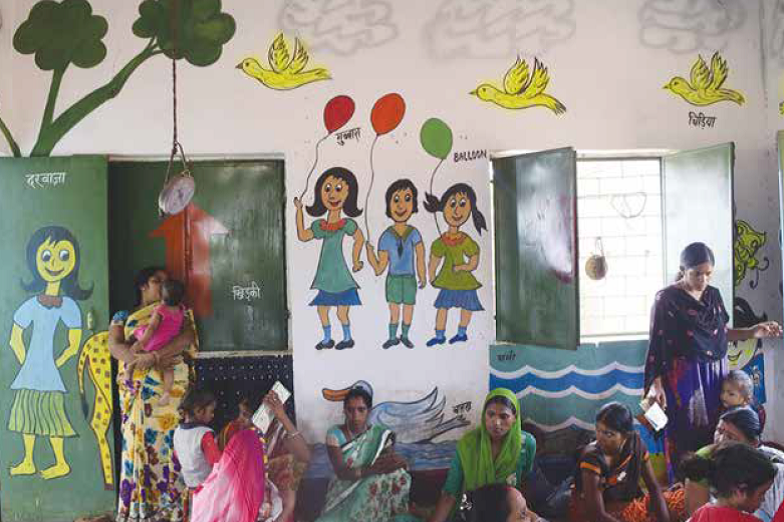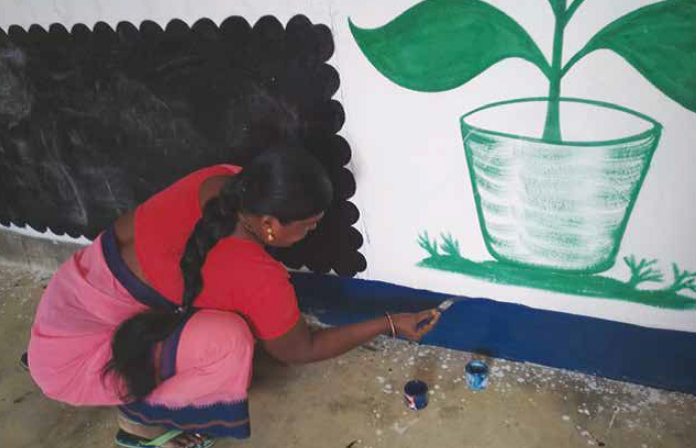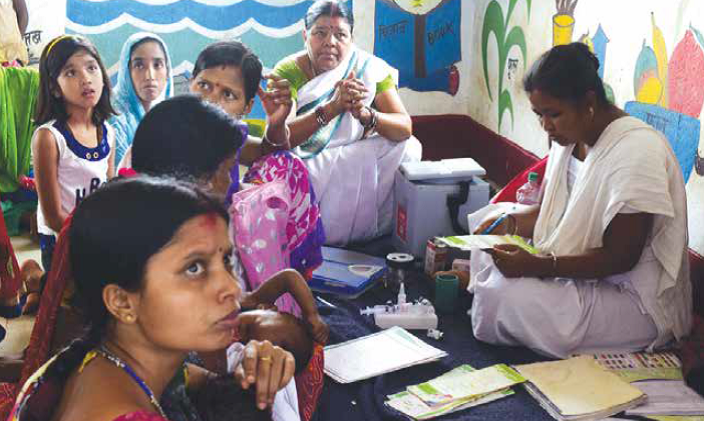Cost Effective Anganwadi in Latehar District
Cost Effective Anganwadi in Latehar District
Latehar district, situated in Palamu region in Jharkhand, is famous for its rich forests and minerals. Its population is predominantly tribal, around 66% belonging to SCs and STs, is spread over nine blocks. Therefore, the literacy rates in Latehar are poorer in comparison to other developed districts. Improving early childhood care and education is seen as a path towards this goal. Consequently, the district administration is working to revive the existing 116 Anganwadi Centres (AWCs) to increase the poor attendance and retention rates amongst children up to 6 years of age.
The aspirational district fellows (ADFs) with the assistance of the district administration have devised a cost-effective method to renovate the AWCs of Latehar.

The average cost for refurbishment is Rs 8,500, which has been decreased by approximately 95 percent. According to ADFs, the costs per square feet has drastically been reduced from 36 rupees to 10 rupees.
The District Commissioner, Shri Rajiw Kumar (IAS), suggested the fellows to conduct a pilot study in the AWCs of the Sasang panchayat. DMFT funds were allocated for their refurbishment as this Panchayat falls under the purview of District Mineral Foundation. Brahmini II (ANC) was the first building to be remodelled. According to ADFs, Brahmini II had motivated Anganwadi workers who could not perform their tasks due to the poor infrastructure.
Local painters, Binod and Prakash, were appointed to repaint the AWCs under the BaLA guidelines. This initiative reduced the expenditure on painting and provided employment opportunities to the locals. Besides the colorful paintings, the fellows emphasised on the use of locally available resources like tyres, beads, stones and sand etc.to make the centers attractive and environment friendly.

The low renovation costs did not compromise on the quality of the facilities available in the AWCs. Every nook and corner of the Brahmini II (ANC) ingrains curiosity in the minds of the children. The ceiling, painted with ‘sky theme’, exposes children to the celestial structures in outer space. Similarly, the paintings of alphabets, numbers, animals, flowers etc. sharpens their cognitive skills. Even the Sevikas, helpers of AWWs, expressed their gratitude since they could use the drawings and paintings as a teaching tool. They shared that the print rich environment helped students recognize names and the associated pictures. This method is called logographic reading. The combination of improved teaching and the appeal of the building has drastically increased attendance rates of students.
The success has led to the fellows preparing a pre-school learning kit with approximately 70 items, such as blocks, picture books, etc. to enhance early childhood literacy and reading. However, there remains some challenges. First, the charts on alphabets, fruits and vegetables, were removed by Sevikas to reduce the damage done to them by the students. Second, the supply of PSE was irregular due to logistical constraints. Therefore, the fellows decided to dedicate a wall to children for their scribbling needs. Paintings were drawn as per the infant’s eye level such that they could access these pictures.

Meals served at AWCs is a contributing factor in improving attendance rates among students. According to Sharmila Devi, mother of a 3 year old in Latehar, nutritious food is a path towards improved learning among students. This is the principle underlying the concept of ‘Kitchen Garden’, which was recently introduced in Brahmini II. The objective is to engage AWWs in growing fresh fruits and vegetables in a garden to reduce malnutrition among students. According to Lalita Devi, Sevika, Kitchen Garden gives AWWs a sense of ‘general ownership’, which improves their performance.
The ADF and the district administration of Latehar have successfully demonstrated that community participation is important in building quality AWC at a low cost. The District Social Welfare Department (DSWD) is assisting the administration to refurbish 100 more AWCs via this model. Further, the mukhiya of the Ichak panchayat demonstrated support by promising to replicate the cost-effective ref model to their AWCs.
Last Modified : 8/23/2021
Provides information related to the district Initi...
This topic provides information about Model School...
This topic provides information about Overview of ...
Provides information about Virtual Responsive Smar...
